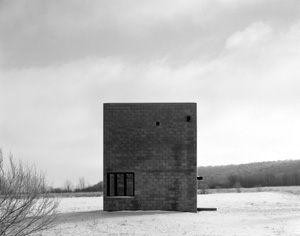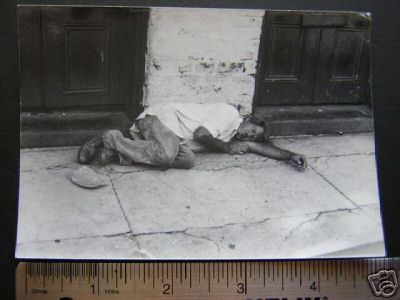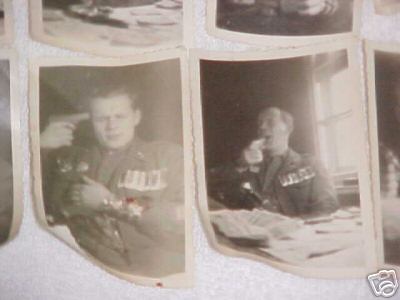Schwarz
View current page
...more recent posts
![]()
The voice of the man, who was calling from the offices of Keefe Bruyette on the 88th floor of that building, was removed from the recording by the city. From the operator's responses, it appears that he wanted to go.
"You cannot — you have to wait until somebody comes there," she tells the man.
The police operator urged him to put wet towels or rags under the door, and said she would connect him to the Fire Department.
As she tried to transfer his call, the phone rang and rang — 15 times, before the police operator gave up and tried a fire department dispatch office in another borough. Eventually, a dispatcher picked up, and he asked the man to repeat the same information that he had provided moments earlier to the police operator. (The police and fire departments had separate computer dispatching systems that were unable to share basic information like the location of an emergency.)
After that, the fire dispatcher hung up, and the man on the 88th floor apparently persisted in asking the police operator — who had stayed on the line — about leaving.
"But I can't tell you to do that, sir," the operator said, who then decided to transfer his call back to the Fire Department. "Let me connect you again. O.K.? Because I really do not want to tell you to do that. I can't tell you to move."
A fire dispatcher picked up and asked — for the third time in the call — for the location of the man on the 88th floor. The dispatcher's instructions were relayed by the police operator.
"O.K.," she said. "I need you to stay in the office. Don't go into the hallway. They're coming upstairs. They are coming. They're trying to get upstairs to you."
Like many other operators that morning, she was invoking advice from a policy known as "defend in place" — meaning that only people just at or above a fire should move, an approach that had long been enshrined in skyscrapers in New York and elsewhere.
At Keefe Bruyette, 67 people died, many of whom had gathered in conference rooms and offices on the 88th and 89th floors.
ingeo fabric/organic plastic that alows plants to
take root...on walls, where ever....
also via zars
spf:a
check out the contact area : Zoltan E. Pali Somis Hay Barnvia zars
there are some pics that scroll in his contact area ... plus a nice
artsy sketch of it.
the hay is stored around the outside of the barn under an
overhang...so the hay walls get used and replenished and they change
the wall colorations according to the season, a very nice simple
design. Not for an area with driving rains however...
After Felix ended his run, Messmer teamed up with Douglas Leigh, the "Lamplighter of Broadway," where he was the lead animator for the large moving electronic signs that lit up Times Square.
During the 1940s and 1950s, Messmer continued to produce new Felix comic books for companies like Dell, Toby Press, and Harvey Comics, and by the 1960s Messmer was finally given the recognition he deserved as the true creator of Felix the Cat. He achieved this with the help of longtime assistant Joseph Oriolo, who took over for him in 1955 and is also credited as the creator of "Casper: The Friendly Ghost."
rip buck owens
spoke fluent honkey tonk

simon ungers, 48, dies in germany
this day in rock
a bunch of good ones today. too pressed to chose
There is little doubt that you have heard the music of Jean 'Toots' Thielemans. Perhaps his most famous composition is the theme to "Sesame Street," which he wrote and performed on his famous harmonica.he also wrote (or co-wrote with ray charles - still checking into that) and was the note for note whistler/guitarist on bluesette
The 80-year-old Thielemans is most famous for bringing the harmonica into jazz. Prior to his introducing it into modern jazz orchestras, the harmonica was viewed as a passe' instrument of folk music.
Thielemans played on the soundtracks of such movies as "Midnight Cowboy" and "The Wiz," and his harmonica has complemented singers ranging from Ella Fitzgerald, to Paul Simon to Billy Joel and many others.
This hour, Toots Thieleman brings his harmonica and his stories to On Point Friday.
go for baroque
peter schickele mix
sunday am
Mayhew's record is just one of several thousand cylinders, the first commercially available recordings ever produced, that have recently become available free of charge to anyone with an Internet connection and some spare bandwidth. Last November, the Donald C. Davidson Library at the University of California, Santa Barbara, introduced the Cylinder Digitization and Preservation Project Web site (cylinders.library.ucsb.edu), a collection of more than 6,000 cylinders converted to downloadable MP3's, WAV files and streaming audio. It's an astonishing trove of sounds: opera arias, comic monologues, marching bands, gospel quartets. Above all, there are the pop tunes churned out by Tin Pan Alley at the turn of the century: ragtime ditties, novelty songs, sentimental ballads and a dizzying range of dialect numbers performed by vaudeville's blackface comedians and other "ethnic impersonators."
For decades, these records languished unheard by all but a few intrepid researchers and enthusiasts. Now, thanks to the Santa Barbara Web site and the efforts of a small group of scholars, collectors and independent record labels, acoustic-era popular music is drifting back into earshot, one crackly cylinder and 78 r.p.m. disc at a time. These old records hold pleasant surprises, but they also carry a larger lesson about gaping holes in the story of American pop.
glass
urban glass house
swiss army knife internet encyclopedia
via zars
reZONED
via dave
camp

the whitney museum / how is it american
It would be a kind of journalism where the camera would be behind the scenes and not have to rely on a narrator to tell the story. That precipitated a whole revolution in making documentaries. It still hasn't filtered down to news reporting, which is still an illustrated lecture. The advance was to get to life in such a direct way that when you saw the film you could judge for yourself.--Albert Maysles
Meanwhile, Mr. Cruz is collaborating with the artist Rebecca Solnit on a theoretical proposal for transforming a 70,000-square-foot McMansion in suburban San Francisco — built during the dot-com boom — into multifamily housing. Mr. Cruz believes that grotesquely overscaled houses across the country will eventually go through a similar process, although that time could be 50 years away.estudio
"It's the next ring of densification," Mr. Cruz said confidently of the mega-McMansions, "so we thought it might make a perfect test case. How do you retrofit them?"
Modernists in Portland Oregon convene here.
i would say a seventies firehouse would qualify


rockefeller apartments w54thst w55thst
rat rod pick of the week
STEVEN PARRINO
MUSÉE D'ART MODERNE ET CONTEMPORAIN
GENEVA
Through May 14
For Steven Parrino, the making of art in New York was—like life in the city itself—an unremitting, unsentimental negotiation between production and destruction. Taking as many cues from Warhol as he did from experimental music, this post-painter wrenched canvases off their stretchers, twisting them into glossy vortexes, and pummeled smooth Sheetrock panels with a sledgehammer. What's most American in Parrino's work are its automatic procedures, its blackouts, and its conceptual relationship with B-horror movies, underground comics, and noise. This retrospective includes more than two hundred works, ranging from paintings, drawings, and photographs that date from the artist's student years and his involvement with the Nature Morte gallery in the East Village to the collaborative film and music projects that preceded his fatal motorcycle accident in 2005.
—John Kelsey
And 70's music. I can hardly count the artists who are musicians or whose works are collaborations with musicians. Tony Conrad, Jim O'Rourke, Daniel Johnston, T. Kelly Mason, Spencer Sweeney, Steven Parrino. Parrino died last year. His enameled black-and-white paintings — like works by Malevich, if Malevich had come from the East Village — are uncompromising, and they were underrated when vacuous decoration came into vogue recently. I'm glad they have a spot here.kimmelman on the '06 whit bi - SP doesnt even catcha mention from saltz
![]()
Some family members argue that the site will be a target for new terrorist attacks, and that its underground location makes it difficult to escape in an emergency. "We know from 1993, and from 2001, that the terrorists love that site, and it will be a very attractive target again," said Debra Burlingame
wfmu online pledge map
ugly chile (you're some pretty doll)
U.S. PREMIERE!
IANNIS XENAKIS: LA LÉGENDE D'EER
Film by Bruno Rastoin (2004)
Played with 7-channel tape mixed live by Gerard Pape.
A very rare opportunity to see and hear this masterpiece of electronic music. An apocalyptical "multi-media" piece for the opening of the Centre Georges-Pompidou in Paris, LA LÉGENDE D'EER played for three months and was seen by thousands. Xenakis performed the electroacoustic 7-channel tape in a curvaceous architectural construction of his own design with a visual component including 1,680 lights, 4 lasers and 400 mirrors. The event was captured in over 350 slides by Rastoin – edited into a film that traces the music. This spectacle of light and sound creates a rich and unsettling environment, an unforgettable journey. Xenakis' associate Gerard Pape will mix the surround-sound experience live from the original master tapes.
![]()
tandemloc news letter
![]()
more shipping container housing from shipping container news
i love you
